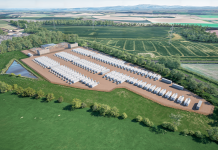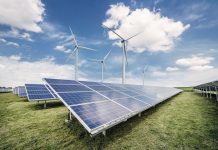 By John Kreyling Business Development Director, Centiel
By John Kreyling Business Development Director, Centiel
The International Energy Agency (IEA) in their Energy 24 report, states that electricity consumption from datacentres could double within the next two years. In a Sky News article John Pettigrew, CEO of National Grid was referenced warning electricity demand from datacentres in the UK would increase six-fold in the next decade.[1].
The incremental growth in internet use has set the stage for higher computing capacity and therefore power to process data. However, what is now being widely reported in the mainstream media is the dramatic growth in artificial intelligence (AI) and the cryptocurrency sector which demand huge amounts of processing power and therefore energy.
James Vincent gives some insight into how much more energy AI consumes in his recent article in the Verge.[2] He states: “Training a large language model like GPT-3, for example, is estimated to use just under 1,300 megawatt hours (MWh) of electricity; about as much power as consumed annually by 130 US homes.”
The challenge for datacentres is that technology to develop AI and other power-hungry applications is growing way faster than the infrastructure. New datacentres are trying to keep up and I have already witnessed one facility implementing higher capacity servers, installing 20kW per rack compared with the usual 5-7kW per rack.
Ireland has a particular challenge with 82 data centres which, according to the IEA, will account for a third of Ireland’s electricity demand by within the next two years. However, this is a challenge across the world with the USA, Europe and China’s datacentres also set to increase the total share of electricity being used. Even increasing share by one or two percent in these regions will create a dramatic consequential shift and power shortages.
Datacentres are also under pressure to meet sustainability goals. It is inevitable that facilities will not be able to rely on the grid in the future and will need to look at renewable energy sources to accommodate increased power demands.
Reported in the Irish Independent,[3] in a strategy to decarbonise operations at its Dublin datacentres, one datacentre has already signed a ten-year agreement with a renewable energy company to supply 81% of the current power needed over the ten years of the deal.
According to forecasts in the Energy 24 report: “Renewables are set to provide more than one-third of total electricity generation globally by early 2025, overtaking coal.”
It is clear that renewable energy will need to play a major part to power our datacentres in the future. Facilities will need to be designed to maximise energy efficiency from the outset. Flat roofs can be used to take advantage of solar energy. There may be space for wind turbines in large grounds?
So what have uninterruptible power supplies (UPS) manufacturers been doing? At Centiel we have looked at the way we manufacture our UPS to make them more efficient. Our sustainable modular UPS StratusPowerTM offers the highest levels of availability and has on-line efficiency of 97.6% and uses sustainable, long-life components.
Innovation in UPS design is also key. UPS will need to continue to do the job they’ve always done to protect critical power, but we’ve gone further and looked at how to help hit the power demand by developing the potential to introduce renewable sources of energy directly onto the UPS to reduce reliance on the grid.
StratusPower was launched recently following four years of development. It is already hardware enabled, and with adaptations to the software/firmware, it is future ready to accept alternative energy sources. UPS systems have large battery banks so configured correctly with LiFePO4 batteries known for their cycling ability, StratusPower has the potential to become a micro-grid or energy hub, storing and delivering energy into the facility when required.
The fact is that we don’t know what the future holds in terms of innovation. What we do know is that we will need better ways to harness renewables, minimise electricity costs and become more sustainable at the same time. Any technology deployed must be flexible enough to be able to adapt and accept different energy sources – some of which may not have even been invented yet.
With AI and the cryptocurrency sector set to disrupt the technological and energy landscape in the very near future, being able to harness renewable energy sources will future proof businesses. Centiel’s expert team of trusted advisors, can work hand-in-hand with organisations to advise about the most efficient UPS systems which can now take advantage of alternative energy sources while carefully managing total cost of ownership, avoiding risk and not compromising on availability.
[2] https://www.theverge.com/24066646/ai-electricity-energy-watts-generative-consumption
[3] Keppel DC signs 10-year agreement with Greencoat Renewables to power Dublin data centres (msn.com)



